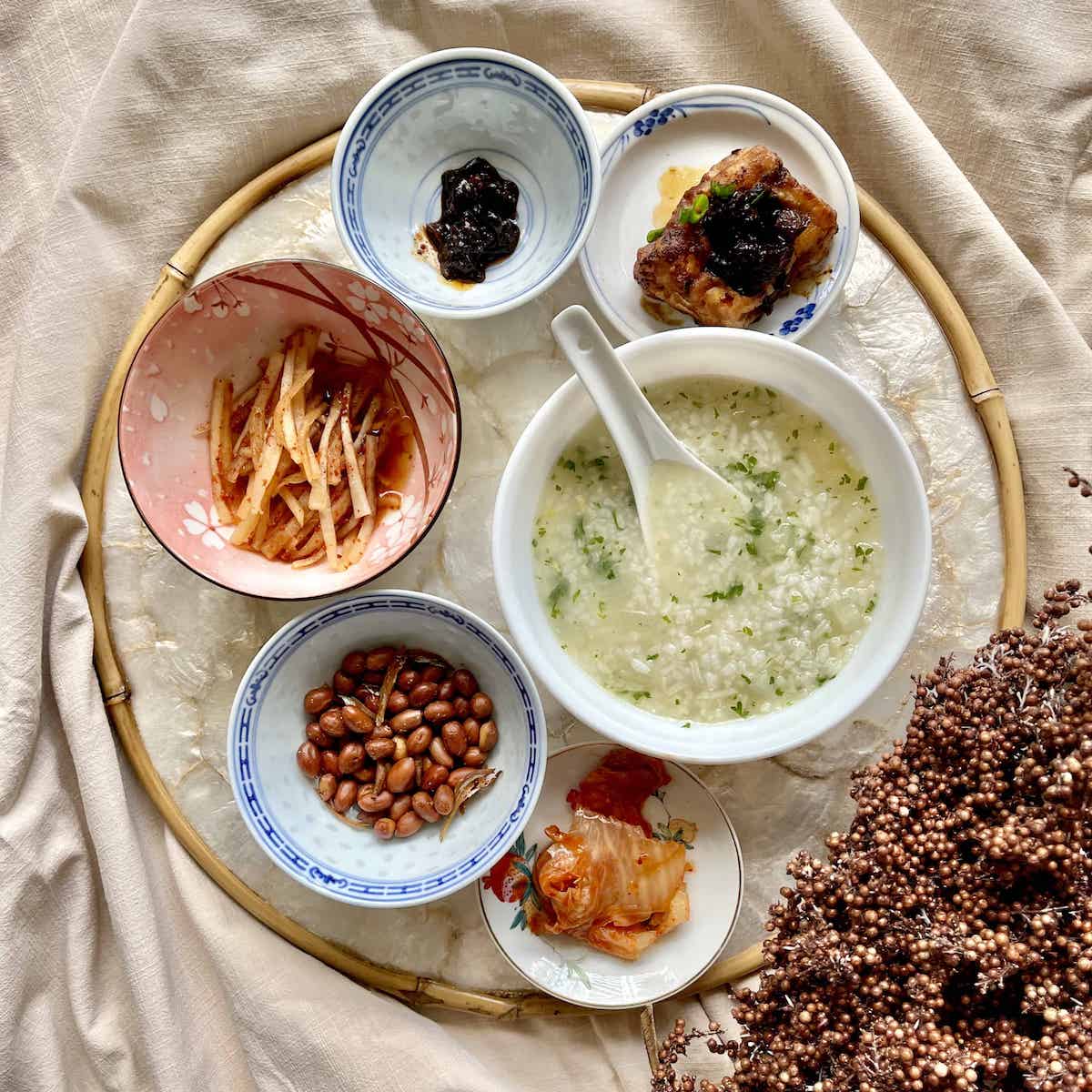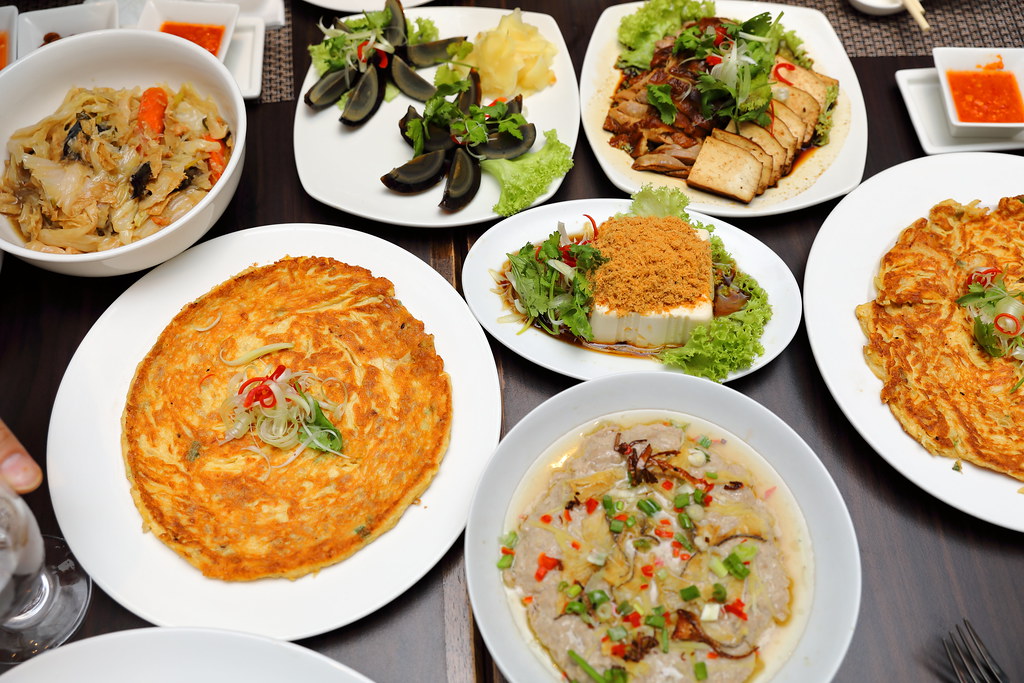Embark on a gastronomic journey through the heart of Teochew cuisine, where porridge takes center stage and side dishes dance in perfect harmony. Teochew porridge, a beloved staple in traditional Chinese dining, has captivated taste buds for generations with its comforting simplicity and boundless possibilities for accompaniment.
In this culinary exploration, we delve into the history, flavors, and techniques that make Teochew porridge side dishes a culinary treasure. From the vibrant colors of braised vegetables to the savory depths of braised meats, each dish is a testament to the ingenuity and passion of Teochew cooks.
Teochew Porridge History
Teochew porridge, also known as Teochew rice porridge, has a rich history and cultural significance in the Teochew region of China. It is believed to have originated during the Song Dynasty (960-1279) when people in the Chaoshan area of Guangdong province began using leftover rice to make a simple and nutritious dish.
Over time, Teochew porridge evolved into a popular street food and became an integral part of Teochew cuisine. It is typically served as a breakfast or supper dish and is often accompanied by a variety of side dishes, such as preserved vegetables, braised pork, and fish balls.
Teochew Porridge in Traditional Chinese Cuisine
Teochew porridge holds a special place in traditional Chinese cuisine. It is considered a comfort food and is often served during family gatherings and special occasions. The porridge is also believed to have medicinal properties and is often consumed by people who are sick or recovering from an illness.
Popular Side Dishes
Teochew porridge is often accompanied by a variety of side dishes that enhance its flavors and textures. These side dishes range from vegetables to meat and seafood, each offering unique ingredients and taste profiles.
To help you navigate the diverse world of Teochew porridge side dishes, we have compiled a comprehensive list organized into categories:
Vegetables
| Name | Description |
|---|---|
| Braised Mustard Greens | Tender mustard greens braised in a savory sauce with garlic and chili peppers. |
| Stir-Fried Kai Lan | Fresh kai lan (Chinese broccoli) sautéed with garlic and soy sauce. |
| Pickled Mustard Greens | Preserved mustard greens with a tangy and slightly sour flavor. |
| Steamed Eggplant with Garlic Sauce | Soft and flavorful eggplant topped with a savory garlic sauce. |
Meat
| Name | Description |
|---|---|
| Braised Pork Belly | Fatty and tender pork belly braised in a sweet and savory sauce. |
| Steamed Chicken | Poached or steamed chicken served with a dipping sauce. |
| Stir-Fried Beef with Oyster Sauce | Thinly sliced beef sautéed in a rich oyster sauce. |
| Braised Meatballs | Ground pork or beef meatballs simmered in a flavorful sauce. |
Seafood
| Name | Description |
|---|---|
| Steamed Fish | Fresh fish steamed to perfection and served with soy sauce. |
| Stir-Fried Clams | Fresh clams sautéed with garlic, ginger, and chili peppers. |
| Oyster Omelet | Fresh oysters fried in a batter made with eggs and flour. |
| Steamed Shrimp | Fresh shrimp steamed and served with a dipping sauce. |
Recipes and Cooking Techniques

In the realm of Teochew porridge, side dishes play a pivotal role in elevating the dining experience. These accompaniments showcase the culinary ingenuity of Teochew cuisine, offering a symphony of flavors and textures that complement the porridge’s comforting simplicity.
From the tantalizing crunch of braised peanuts to the savory umami of braised intestines, Teochew porridge side dishes boast a diverse range of flavors and cooking techniques. Let us embark on a culinary journey to explore three popular recipes, unraveling the secrets of their preparation and the unique ingredients that make them so delectable.
Braised Peanuts
These humble legumes undergo a transformation in a savory braising liquid, emerging with a delectable crunch and a rich, nutty flavor. To prepare braised peanuts, begin by soaking them overnight. Drain and rinse the peanuts thoroughly before placing them in a pot with water, soy sauce, sugar, five-spice powder, and star anise.
Bring the mixture to a boil, then reduce heat and simmer for 1-2 hours, or until the peanuts are tender. Once cooked, remove the peanuts from the liquid and allow them to cool before serving.
Braised Intestines
Intestines, an often-underrated delicacy, are transformed into a flavorful side dish through the art of braising. To prepare braised intestines, thoroughly clean and wash the intestines, removing any excess fat or impurities.
In a large pot, combine the intestines with water, soy sauce, dark soy sauce, sugar, five-spice powder, and star anise. Bring the mixture to a boil, then reduce heat and simmer for 2-3 hours, or until the intestines are tender and the liquid has reduced.
Once cooked, remove the intestines from the liquid and slice them into bite-sized pieces. Serve the braised intestines hot, garnished with cilantro or scallions.
Crispy Fried Shallots
These golden-brown shallots add a delightful crunch and aromatic flavor to Teochew porridge. To prepare crispy fried shallots, thinly slice shallots and separate the layers. Heat oil in a wok or frying pan and carefully add the shallots.
Fry the shallots over medium heat, stirring occasionally, until they turn golden brown and crispy. Remove the shallots from the oil and drain on paper towels before serving.
Nutritional Value
Teochew porridge side dishes offer a diverse range of nutrients, providing essential vitamins, minerals, and antioxidants.
The nutritional content varies depending on the specific side dish. However, most dishes are rich in:
Carbohydrates
- Rice, the primary ingredient in Teochew porridge, provides complex carbohydrates for sustained energy.
- Side dishes like fried dough sticks (you tiao) and steamed buns (mantou) also contribute to carbohydrate intake.
Protein
- Meat and seafood dishes, such as braised pork belly (lu rou fan) and steamed fish, are excellent sources of protein.
- Eggs, often served as a side dish, provide complete protein.
Fiber
- Vegetables, such as preserved mustard greens (mei cai) and stir-fried greens, add dietary fiber to the meal.
- Fiber promotes digestive health and helps regulate blood sugar levels.
Vitamins and Minerals
- Side dishes like steamed vegetables and stir-fried greens provide essential vitamins and minerals, including vitamin A, vitamin C, and iron.
- Meat and seafood dishes contribute to the intake of B vitamins and zinc.
Variations and Innovations
Teochew porridge side dishes have undergone various evolutions over time, showcasing the culinary creativity and adaptability of the Teochew community. Traditional recipes have been reimagined with modern interpretations and innovative uses, resulting in a diverse array of side dishes that cater to contemporary palates.
Modern Interpretations
Contemporary chefs have experimented with traditional side dishes, incorporating new ingredients and techniques to create modern interpretations. For instance, the classic oyster omelet has been transformed into a crispy oyster pancake, served with a savory dipping sauce. Braised pork belly has been reimagined as a succulent slow-cooked dish, glazed with a sweet and tangy sauce.
Creative Uses
Teochew porridge side dishes have also found creative uses beyond their traditional accompaniment to porridge. Braised duck is now a popular ingredient in salads and sandwiches, while steamed fish is often served as a main course with a variety of dipping sauces.
The versatility of these side dishes has expanded their culinary applications, making them a staple in many modern kitchens.
Presentation and Serving Suggestions

The presentation of Teochew porridge side dishes is crucial to enhance their appeal and authenticity. By incorporating visually striking garnishes, condiments, and accompaniments, you can elevate the dining experience and showcase the culinary artistry of this beloved dish.
To achieve an authentic presentation, consider using traditional Teochew ingredients and utensils. For instance, serving the porridge in small individual bowls with chopsticks and porcelain spoons adds a touch of cultural authenticity.
Garnishes
- Fried shallots: Crisp and aromatic, fried shallots add a savory and textural contrast to the porridge.
- Crispy seaweed: Dried seaweed, when fried or toasted, becomes crispy and adds a salty, umami flavor.
- Fresh cilantro: The vibrant green color and refreshing aroma of cilantro provide a burst of freshness to the dish.
Condiments
- Soy sauce: A staple condiment for Teochew porridge, soy sauce enhances the savory flavors of the dish.
- Chili oil: For those who prefer a spicy kick, chili oil adds a fiery touch to the porridge.
- White pepper: Ground white pepper adds a subtle warmth and aroma to the dish.
Accompaniments
- Youtiao (Chinese crullers): These crispy and fluffy dough sticks are a classic accompaniment for Teochew porridge, providing a contrasting texture and flavor.
- Preserved vegetables: Fermented vegetables, such as pickled mustard greens or radish, add a tangy and salty element to the porridge.
- Boiled eggs: Hard-boiled eggs are a simple yet satisfying addition, providing a source of protein and a creamy texture.
Final Summary
As we conclude our exploration of Teochew porridge side dishes, we are left with a symphony of flavors that echo the richness of Chinese culinary traditions. These dishes, with their intricate balance of ingredients and textures, are not mere accompaniments but integral parts of the Teochew porridge experience.
Whether enjoyed as a comforting breakfast, a light lunch, or a hearty dinner, these side dishes elevate the humble porridge to a culinary masterpiece.
FAQ
What are the key ingredients commonly found in Teochew porridge side dishes?
Teochew porridge side dishes often feature fresh vegetables, such as mustard greens, spinach, and lettuce, along with a variety of meats, including pork, chicken, and duck. Seafood, such as shrimp, fish, and squid, is also commonly used.
How do Teochew porridge side dishes differ from other Chinese side dishes?
Teochew porridge side dishes are typically lighter and less oily than other Chinese side dishes. They also tend to use more fresh vegetables and herbs, resulting in a more refreshing and balanced flavor profile.
Can Teochew porridge side dishes be made ahead of time?
Yes, many Teochew porridge side dishes can be made ahead of time and reheated before serving. This makes them a convenient option for busy weeknights or large gatherings.
